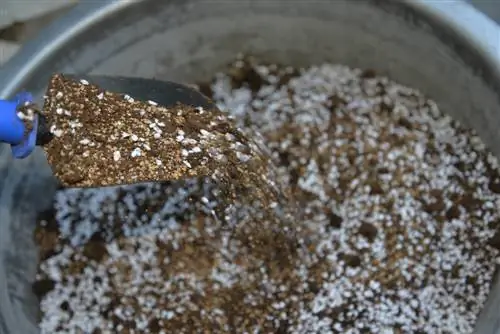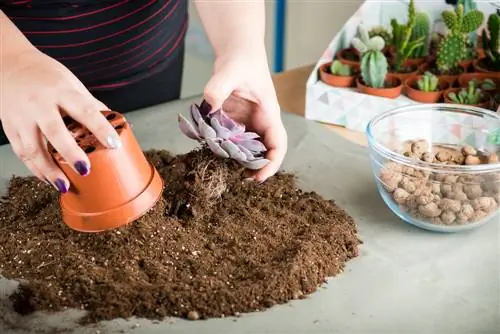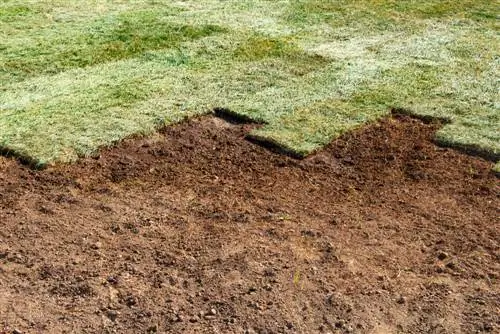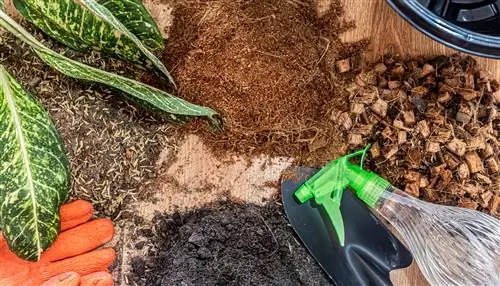- Author admin [email protected].
- Public 2023-12-16 16:46.
- Last modified 2025-01-23 11:22.
You can buy good bonsai soil from specialist retailers or mix it yourself. The advantage of using your own substrate recipes is that they are perfectly tailored to the individual needs of the tree in the bowl. You can find out how to mix the optimal bonsai soil yourself here.
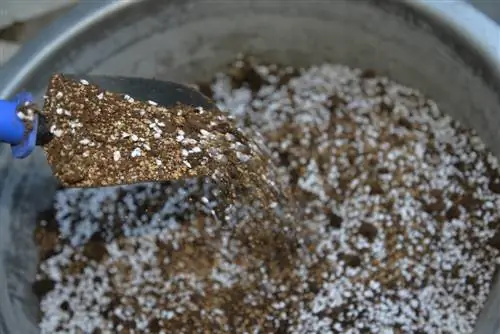
How can I mix bonsai soil myself?
You can mix bonsai soil yourself by using 2 parts Akadama, 1 part lava granulate, 1 part pumice gravel, 1 part humus and fine-grained gravel as drainage. The optimal mixture varies depending on the type of tree, such as deciduous or coniferous trees, and their individual requirements.
Can I mix bonsai soil myself?
You can mix bonsai soil yourself from 2 parts akadama, 1 part lava granulate, 1 part pumice gravel, 1 part humus and fine-grained gravel for drainage.
Good bonsai soil is alwayscoarse-grainedandstructurally stable Important properties are solid water storage and reliable ventilation, because you only have one bonsai repot for a few years. The exact composition of bonsai substrate depends primarily on the tree species. A deciduous tree has different requirements as a bonsai than a conifer.
What ingredients can I use to mix bonsai soil myself?
If you mix bonsai soil yourself, you should predominantly usemineral ingredients. Organic components play a minor role due to the increased risk of mold and pests. These are proven components for self-mixed bonsai soil:
- Akadama: dried clay granules, structurally stable water storage, good for ventilation.
- Pumice gravel: porous, feather-light lava rock, ideal as an aggregate or drainage.
- Kanuma: Granules made from lava, acidic pH value.
- Kiryu: special bonsai substrate for conifers.
- Expanded clay: fired clay balls, germ-free, neutral, rot-proof, protects against waterlogging.
- Lava granules: granulated lava, inorganic, does not mold, does not decompose, neutral.
- Humus (optional): clay soil, potting soil, compost.
What recipe do I use to mix bonsai soil for a conifer?
The best bonsai soil for a conifer is made from 1 part Kiryu, 1 part pumice gravel and 2 parts Akadama. You can also use pure Kiryu soil for a juniper or pine bonsai. Other recommended mixtures for coniferous bonsai are:
- 2 parts sand, 2 parts clay, 1 part coconut fiber.
- 1 part Akadama, 1 part expanded clay, 1 part lava granules, 1 part sand.
What recipe do I use to mix bonsai soil for a deciduous tree?
Mix a premium quality bonsai substrate from equal parts Akadama, Kanuma and pumice gravel. You can also plant deciduous trees for acidic soil in pure Kanuma bonsai soil from specialist retailers, such as hydrangea, rhododendron or azalea. Othertried and testedsoil mixtures for deciduous tree bonsai are:
- 2 parts Akadama, 1 part pumice gravel, 1 part lava granulate.
- 2 parts akadama, 1 part humus, 1 part fine-grained gravel.
- 1 part potting soil, 1 part coconut fiber soil, 1 part pumice gravel.
Tip
Test the pH before planting
The best bonsai soil will still kill the tree if the pH value is not right. Acid-loving tree species in particular, such as junipers and azaleas, rely on a pH value of around 5.5. For substrates from specialist retailers, you can read the pH value on the packaging. If you mix bonsai soil yourself, check the pH value (€2.00 on Amazon) with a test strip before planting the tree in the bowl.

